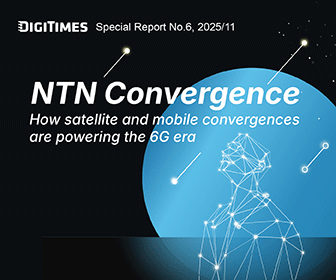ViewSonic recently held a distributors' event highlighting four main display application scenarios. Notable products included anti-peep AI screens and foldable large-size exhibition screens. In the second quarter of 2024, the company's interactive displays captured 66% of Taiwan's education field market share, with expectations of further growth in AI applications. However, the company noted that many teachers are reluctant to incorporate AI into their teaching, making the simplification of AI applications a key focus for businesses.
The company's main software-hardware integration solution addresses four primary application scenarios: schools, meeting rooms, exhibition halls, and personal workstations. These display applications incorporate software and cloud service technology from various companies, including Microsoft, OpenAI, and Amazon Web Services (AWS).
ViewSonic Professional Audiovisual (ProAV) General Manager Yujen Lien reported that they have integrated OpenAI's Whisper model for speech-to-text functionality, noting improved generation accuracy. The company plans to continue monitoring technical progress made by other businesses.
ViewSonic has partnered with Nani and Kang Hsuan, two of Taiwan's three largest textbook companies, to promote "AI textbooks" aimed at enhancing student-teacher classroom interaction. The company is also exploring additional AI screen applications, with plans to implement technologies such as verbal control and meeting abstract generators.
Regarding market share, ViewSonic's interactive displays in Taiwan's education market achieved a penetration rate of 59.35% in the first quarter of 2024, which increased to 66% in the second quarter, representing over half of the market. Lien mentioned that he teaches at a university, and many of his colleagues also have teaching backgrounds, giving the team an advantage in understanding the education market's pain points.
Sources indicate that ViewSonic has its headquarters in the United States and an R&D Center in Taiwan. The company employs over 1,300 staff members globally, with about 600 based in Taiwan. It primarily uses SoCs from Qualcomm and MediaTek for its products and avoids using chips from China-based companies. Its partnered production lines are located in areas including China, Vietnam, and India, while products required by the Taiwanese military are manufactured in Taiwan.
Simplifying usage and providing education training become key aspects
ViewSonic chairman James Chu noted that more schools are replacing traditional classroom blackboards with interactive displays. He emphasized that the key to expanding usage lies in ecosystem solutions and improving user experience.
While AI can generate images and its capabilities continue to expand, Chu questioned its significance in the teaching field. He observed that many teachers are hesitant about incorporating AI into their courses. Consequently, simplifying usage and providing education training have become crucial factors.
Chu also stated that the company's displays have made significant progress in the business meeting sector, and he hopes to achieve the same market share as in the education market.
ViewSonic's anti-peek AI screen module incorporates image sensors and facial recognition algorithms. If the user's face moves a certain distance away from the screen, it will automatically darken. If the user leaves their position for a certain amount of time (which can be adjusted), the screen will turn off automatically. For large exhibition halls, the company has introduced a foldable screen to facilitate easier transport.




